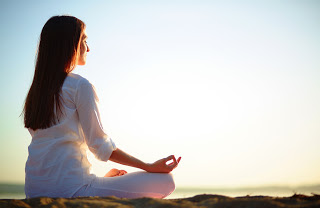Yoga is a set of physical and mental exercises. There are Different Types of Yoga Poses that are beneficial for a person who practices yoga on a regular basis. Different types of yoga poses are beneficial for different types of body parts. It is also beneficial for mental health which nowadays becomes a very sensitive issue.
So Yoga is a complete solution for both physical and mental health.
Today, we are going to see Different Types of Yoga Poses that divide all yoga poses. All these poses are created in such a way that strengthens different body parts in different ways.
There are 11 Different Types of Yoga Poses
- Standing Poses: These poses focus on improving balance, strength, and flexibility. They also increase the confidence of the person who practices yoga.
Tadasana (Mountain Pose) and Virabhadrasana (Warrior Poses) are examples of Standing Yoga Poses. - Seated Poses: These poses are practiced while sitting. They enhance flexibility in the hips, hamstrings, and lower back.
Siddhasana or Accomplished Pose and Padmasana (Lotus Pose) are examples of Seated Yoga Poses. - Twisting Poses: Twisting poses are beneficial for spinal mobility and detoxification.
Ardha Matsyendrasana (Half Lord of the Fishes Pose) is an example of Twisting Yoga Poses. - Forward Bends: These poses involve bending forward, promoting flexibility in the spine and hamstrings.
Uttanasana (Forward Fold) and Paschimottanasana (Seated Forward Bend) are examples of Forward Yoga Poses. - Backbends: Backbends help improve posture, strengthen the back muscles, and open the chest and shoulders.
Bhujangasana (Cobra Pose) and Ustrasana (Camel Pose) are examples of Backbends. - Balancing Poses: These poses enhance concentration, focus, and balance. It includes Vrikshasana(Tree Pose) and Bakasana (Crow Pose).
- Inversions: Inversions involve going upside down, which can improve circulation, build core strength, and boost energy levels. It includes Sirsasana (Headstand) and Sarvangasana (Shoulderstand).
- Restorative Poses: Restorative poses are deeply relaxing and help in reducing stress and fatigue. Examples: Savasana (Corpse Pose) and Balasana (Child's Pose).
- Core Strengthening Poses: These poses target the abdominal muscles, improving core strength and stability. Examples include Naukasana(Boat Pose) and Plank Pose.
- Prone Poses: Prone poses are practiced lying on the abdomen and are excellent for strengthening the back muscles. These types of poses need high muscle strength, so must be done only by people who have done yoga poses on a regular basis for at least 6 months.
Examples: Salabhasana (Locust Pose) and Dhanurasana (Bow Pose). - Supine Poses: Supine poses are practiced lying on the back and focus on relaxation and gentle stretching. Examples: Supta Baddha Konasana (Reclining Bound Angle Pose) and Supta Matsyendrasana (Supine Spinal Twist).
So, above are broadly Different Types of Yoga Poses. While doing any of the above poses one should always follow all the instructions given and before starting Yoga, one should definitely take advice from the expert in order to avoid any future complications.

0 Comments